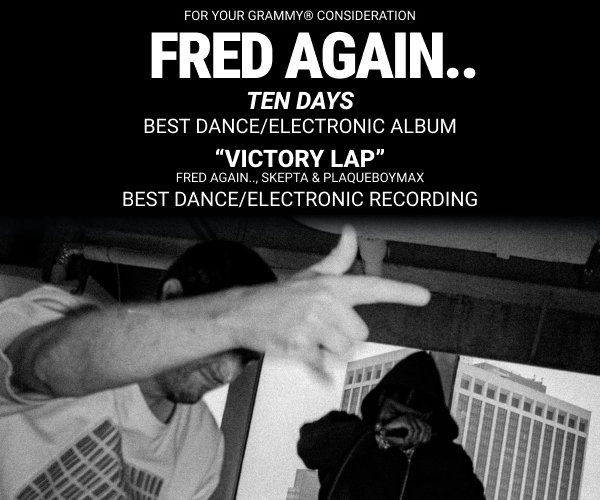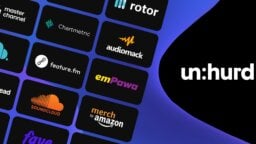beatBread has been making a lot of noise in the independent music funding space over the past four years.
Founded in 2020, the AI-driven platform initially raised $34 million in a seed round in 2022, then closed a $100 million institutional fund later that same year.
Also in 2022, beatBread launched “an exclusive investor network” that added funding from music companies and professionals, distributors and ‘high-net worth’ individuals to its existing pool of institutional capital.
beatBread confirms that it has raised over $140 million in direct institutional funding to date, and says it has access to “hundreds of millions of dollars in additional funding pools from inside and outside the music industry”.
It also launched advances of up to $3 million for songwriters in 2023, and added publishing administration to its list of services last year via partnerships with Kobalt and AMRA.
Today, beatBread says it has paid advances to over 1,300 clients on six continents to date on existing catalogs as well as new and unreleased music. The platform’s funding amounts range from $1,000 to over $10 million.
Now the company is expanding its arsenal of financing services for independent musicians and labels with a new Deal Comparison Tool.
beatBread says its new Deal Comparison Tool lets independent artists and labels compare offers from distributors, major labels, and other funding sources side by side to “avoid unexpected traps and make better funding choices.”
The company says that in beta testing, around 60% of artists and label owners chose a different deal from the one they had before using The Deal Comparison Tool.
According to beatBread, the beta test included a “wide array” of artists and labels, with original offers ranging from $100,000 to over $100 million.
CEO Peter Sinclair explains in our detailed interview below how the comparison service works in practice, but here’s a taster version:
Artists and labels can provide details of the offers they’ve received for input into the system, which is powered by a set of data-driven algorithms.

beatBread will then analyze the key parts of each deal and compare them to offers from the company’s wider funding network.
Users are then presented with visualizations showing how cashflows, costs and recoupment for each deal compare over time.
They’ll also be shown the suggested pros and cons of each deal depending on how the artist or label’s music performs over time (see below).

“It is impossible to make a smart decision without comparing your options and understanding your choices,” says Sinclair. “Even the most sophisticated executives can be deceived by ‘headline terms’ in a deal.
“The Deal Comparison Tool cuts through the fog and lets labels and artists truly understand how a deal is likely to play out in the real world. Summary terms aren’t enough to make a good decision, you have to understand cash timing, total cost, the true length of your commitments, and how these ‘real terms’ vary based on future performance.”
“Our goal is to be the place where smart funding choices are made, whether we fund the deal or not.”
Peter Sinclair, beatBread
Adds Sinclair: “After using The Deal Comparison Tool, some people pick a beatBread deal, but just as often, they choose an offer from one of our partners or even a competitor. And that’s OK. Our goal is to be the place where smart funding choices are made, whether we fund the deal or not.”
The company claims in its official launch announcement that the insights offered by the new comparison tool “empower users to choose the funding option that best aligns with their goals and risk tolerance, regardless of whether that funding is sourced from beatBread, one of its Funding Network partners, or even a competitor”.
For beatBread, the advances it pays out via its own platform are evaluated using its proprietary ChordCashAI streaming forecasting engine. Deals are based on existing catalog as well as new and unreleased music.
The company explains that all advances are repaid from a share of streaming and airplay revenues, over a period of the artist or indie label’s choosing.
beatBread stresses that all of its advance agreements “leave touring, sync, and merchandise revenue streams untouched” and that it does not “impose creative judgments or requirements”. It also says that it leaves “the choice of marketing and distribution partners in the client’s hands”.
And according to beatBread, while some artists and indie labels may choose to sell their catalogs on the platform, “all are presented with funding options that enable them to retain ownership of their music”.
Here, beatBread CEO Peter Sinclair explains why the company developed the new comparison tool, how it works, and what he predicts the power dynamics between the independent sector and traditional record industry will look like in the near future…
What led to the development of beatBread’s Comparison Tool and why has it launched now?
Two reasons on “why”. First, overall, the music industry has changed dramatically in recent years, with more options than ever for artists and independent labels to fund and distribute their work. With that abundance of choice comes complexity. Traditional deals, advances from distributors, and offers from finance companies all come with different terms, revenue shares, and risks, making it difficult for artists and labels to compare them on an apples-to-apples basis. A simple way to compare complex deals was a clear need we saw, so we built a solution.
“A lot of music deals are weapons of financial destruction that clients just don’t understand.”
Peter Sinclair
Second, we saw a lot of artists and labels who have come to us who had either signed terrible deals in the past, or had an offer on the table that looked great but had terms that would end up playing out terribly in the future.
This is particularly true for indie labels signing distro deals that “look great” in the headline terms, but are likely to lead to a distress sale to a large distributor or major label in a few short years. A lot of music deals are weapons of financial destruction that clients just don’t understand. We built this tool to show, not just tell, how a deal would likely play out in the real world, and let informed clients make their own choices.
As for “why now “– it’s just that the demand was there. Artists and labels were already using beatBread’s platform to explore different funding options, and they kept showing us deals they had from other sources, some of which were great, others of which were terrible, and most of which they didn’t really understand.
The Deal Comparison Tool is a direct response to that need, designed to empower artists and indie labels with data-driven decision-making. Selfishly, we know that if we offer that tool that shows the facts and lets clients run their own scenarios and decide, we’ll come out ahead, even if 6 or 7 in 10 clients end up taking funding from a source other than beatBread or one of our partners after using the Deal Comparison Tool. If you provide real value to your potential clients, you’ll do just fine.
So the platform enables data-driven comparison and cash flow simulation of offers from distributors, major labels, and finance companies – could you run us through an example scenario of how this works in practice?
Let’s say an independent label comes to us with two different offers:
Offer 1: A traditional label JV with a major offering a $600,000 advance in exchange for a long-term rights deal and a 70/30 revenue split after recoupment for three years post recoup, and that includes a share of new releases from that indie label during the term.
Offer 2: A distribution deal offering a $400,000 advance with a 20% distribution fee but full ownership of their masters, with a term of seven years, but that leaves new signings free and clear.
After processing the offers, and the data, we can compare those two deals not only to each other but also [with] 1 to 4 others from beatBread, or one of several finance and distribution partners in our network.
Let’s say we generate only one more:
Offer 3: A financing deal from a beatBread partner, also for $400,000, allowing [the] artist to retain 100% ownership of their music while repaying from a fixed percentage of future streaming and sales revenue at a 70/30 split (in the indie label’s favor), also keeping new releases free and clear.
With the Deal Comparison Tool, a client can then see:
How much they’ll take home, by year, depending on how the music performs.
It highlights how long it would take to recoup under each structure, and how long they’re likely to keep paying fees on the deal
Which of these deals is actually “better” depends on a number of factors. There are scenarios where any one of the three would be “best”. depending on how the music performs, how willing a client is to share money over time, how much the client value short term cash vs. long term cost, what their actual costs are that they need to cover each year, and how much they believe they will “beat the odds” on our predicted cash flow scenarios.
I understand that in beta testing, about 60% of artists and label owners chose a deal other than the one they had before using the Deal Comparison Tool. What does that tell us about the effectiveness of the tool in the decision-making process around deal offers?
It tells us that when artists and labels have full visibility into their options, they often realize that what may look like a great deal isn’t in fact the best fit for their goals.
Many artists and labels enter negotiations without a clear financial picture of what they’re signing up for. The tool provides objective data that shifts the power dynamic, enabling them to negotiate smarter or choose a path that better aligns with their needs.
Could you tell us about the technology that underpins the tool and the wider beatBread platform?
At its core, the Deal Comparison Tool is powered by a set of data-driven algorithms, modeled on hundreds of thousands of artist profiles and tens of millions of songs over multiple years, looking at streams, social graphs, press mentions and other proprietary variables.
It uses these predictions of future performance (both existing songs, and new releases) and maps them to different contract structures to show how they will play out in the real world.
“Data science is at the core of everything we do.”
Peter Sinclair
Data science is at the core of everything we do. We aren’t the best A&Rs in the world, so we don’t try to be. We are good at showing the numbers and probabilities, and helping our clients make their own choices, within a reasonable range of predicted outcomes.
Our technology is designed to provide transparency and control, giving artists, labels, and managers better financial insights to make their own trade offs, and choices.
How do you see beatBread positioned in the music industry today and in the coming years?
We want beatBread to be seen as the place you come to get the most funding choices and clarity to find the best fitting deal.
“There isn’t always a ‘best deal’, but there is sometimes a worst one.”
Peter Sinclair
There isn’t always a “best deal”, but there is sometimes a worst one, and there’s definitely a good decision process and a bad decision process. Not comparing offers and getting more ones is a bad decision process.
In the coming years, I see beatBread becoming a go-to platform not just for funding, but to choose the right non-financial partners – Marketing, label, producers and others. More to come on those features in the future.
With the emergence and rise of alternative funding platforms like beatBread, what are your short-term and long-term predictions for the power dynamic between independents and the traditional record industry?
Short-term: We’re already seeing a massive decentralization of power and that will continue. More artists are choosing financing models that don’t require giving up their masters until they have achieved a degree of success, and can sell on their own terms. The industry will continue to adapt by offering more flexible, artist-friendly deals just to stay competitive.
Long-term: The days of one-size-fits-all major label deals are numbered. We’re moving toward an industry where artists and labels can assemble their own teams and service partners, fund their businesses on their own terms, retaining far greater ownership of their work, and control over their own destinies.
[Sir] Lucian Grainge [Universal Music Chairman and CEO], points out that UMG “is not a financial institution”. His point seems to be that artists should sign with a UMG label because they bring more to the table than money. I half agree with that.
Differentiated services and marketing is what makes labels (major or indie) different and value-added. But having a service offering doesn’t give a label (major or indie) the right to wrap a terrible financial deal around a set of services. Further, Artists and indie labels shouldn’t lock themselves into long term services deals with distributors or major label JVs that may not make sense as the artist or indie label business evolves.
What we are trying to do is pair nimble, excellent service offerings (provided by our partners, not us) with gigantic pools of institutional capital that trusts our data science, and can write big checks against deals that look too risky to others.
This pairing is not only for catalog purchases, but for actual working capital, artist development and funding of new projects. Our mission is to make this happen on fairer terms for artists and to help indie labels compete by filling the one major gap they lack in going against the majors: capital.
I have no doubt the majors can survive in the future and maybe even thrive. I worked at UMG, and there are some excellent people there, and I’m sure Warner and Sony, too. But the majors are going to need to adapt and compete on services and less on their legacy and checkbooks.
beatBread currently offers funding amounts up to $10 million. Do you see this increasing to, say, $20 million or more in the near future?
Our funding agreements don’t really limit us by size of the deal. We like to give a reasonable guide to potential clients. There are definitely edge cases where we can already go higher than $10 million, and already have. For better or worse, we don’t overpromise as much as your average music industry company.
That said, our priority is not just offering bigger checks, but making sure we’re providing the right funding structures that work for artists at every level.
Whether it’s $10,000 or $10 million, our goal is to create fair, flexible financing solutions that keep artists and labels in control, whether we end up writing the check, or just help the artist choose a funding option from someone other than us.Music Business Worldwide





